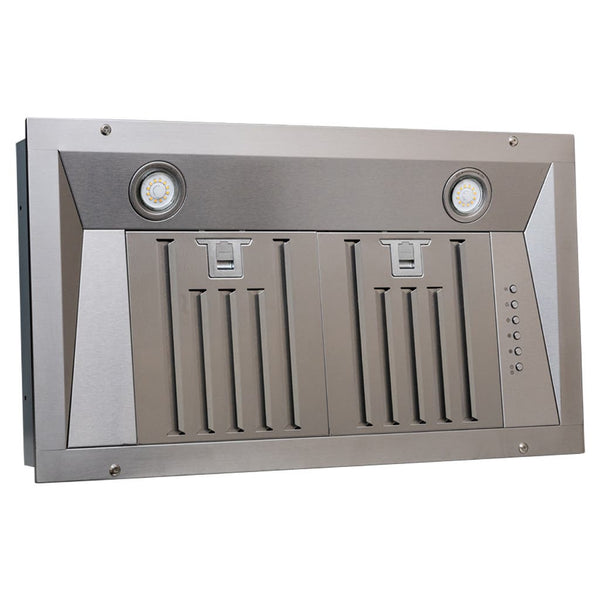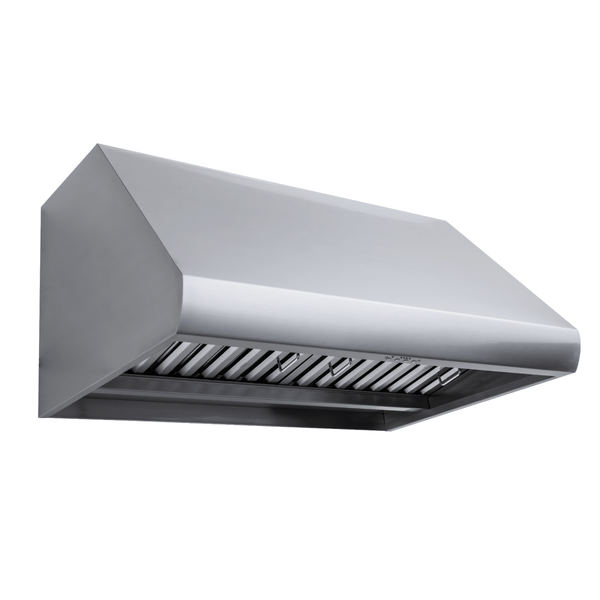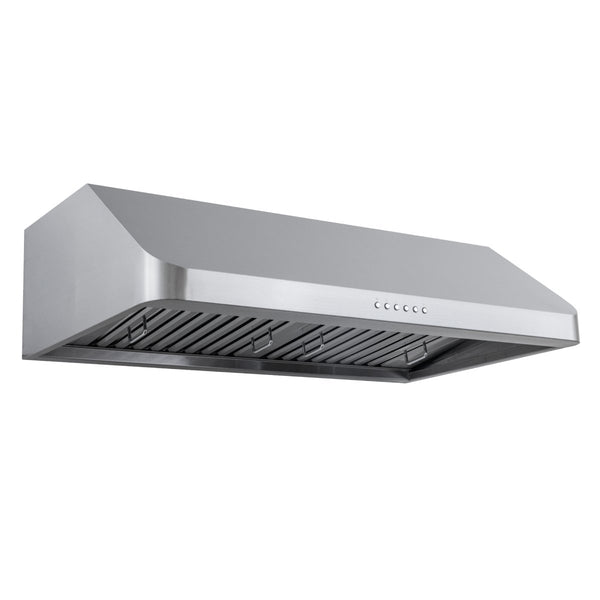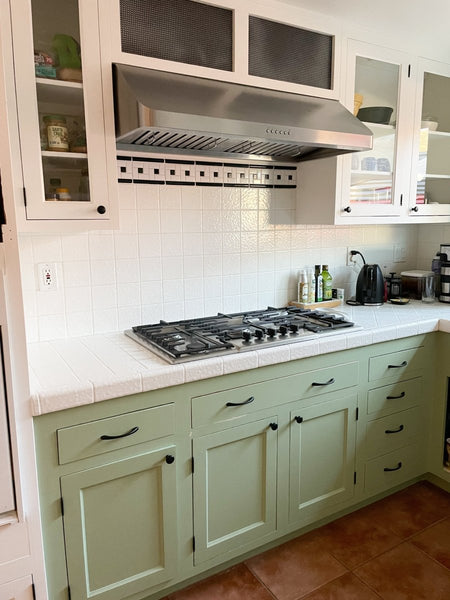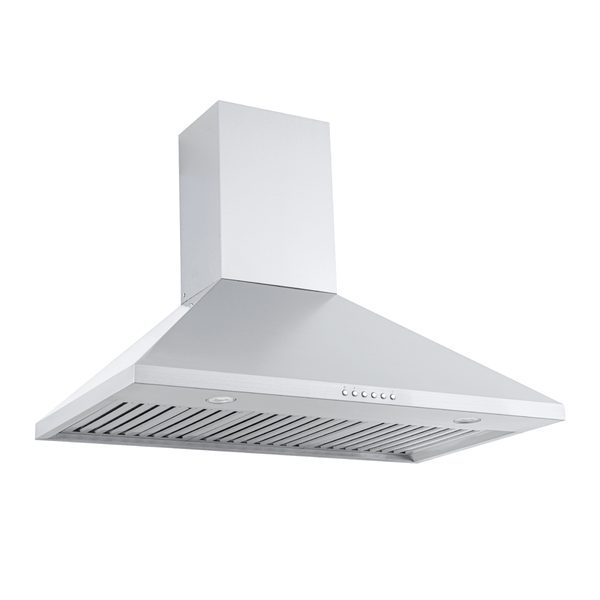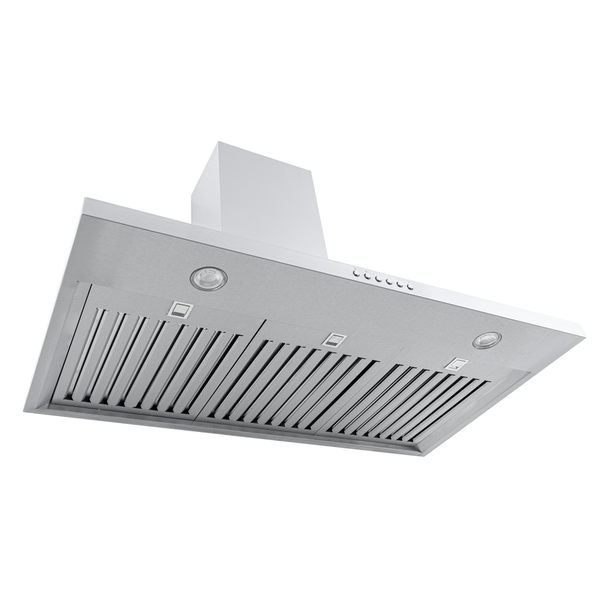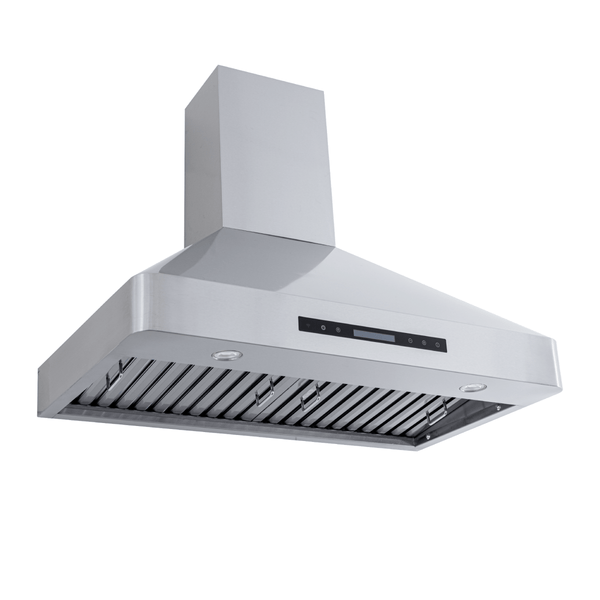Cooking may seem like a harmless everyday activity, but the fumes released during the cooking process can actually pose a significant health risk. We aren't going to make more of this than to simply state the facts.
Studies have revealed that cooking fumes contain a variety of toxic substances that can have serious consequences for our health.
Just one of the many reasons to have a high-quality range hood in your kitchen. We’ll reference the studies at the end of the article.
The key culprits found in cooking fumes include polycyclic aromatic hydrocarbons (PAHs), aldehydes, and fine particulate matter.
These key toxins in cooking fumes primarily come from the high-temperature breakdown and combustion of the fats and oils used in cooking, which release PAHs, aldehydes, and fine particulate matter into the air. The type and amount of these toxins can vary depending on the cooking method, temperature, and oils/fats used.

A little more about them:
Polycyclic Aromatic Hydrocarbons (PAHs)
- PAHs are produced when foods, especially those high in unsaturated fats, are cooked at high temperatures, such as during frying or grilling. The incomplete combustion or pyrolysis of these fats leads to the formation of PAHs.
Aldehydes
- Aldehydes, such as acrolein, formaldehyde, and acetaldehyde, are also produced during the high-temperature cooking of foods. These compounds are formed from the oxidation and breakdown of unsaturated fatty acids.
Fine Particulate Matter (PM2.5)
- Cooking, particularly frying and high-heat cooking methods, generates fine particulate matter (PM2.5) that can be released into the air as part of the cooking fumes. This particulate matter can contain a mixture of chemicals, including PAHs and other toxins.
These substances can trigger oxidative stress, DNA damage, and even increase the risk of several types of cancer, including lung, bladder, and cervical cancer (Ma et al., 2020; Chiang et al., 1999; Zhang et al., 2019; Lai et al., 2013).
One study found that exposure to cooking oil fumes can cause toxicity in the lungs, with oxidative stress being a primary driver of the observed effects (Ma et al., 2020). Another study identified carcinogenic compounds like PAHs in cooking fumes, which may be linked to a higher risk of lung cancer (Chiang et al., 1999).

The health risks extend beyond the lungs as well. Researchers have found that cooking fume exposure can impact the health of umbilical cord blood vessels, leading to increased oxidative stress, inflammation, and dysfunction (Hou et al., 2017; Ding et al., 2019). Additionally, studies suggest cooking fumes may play a role in the development of cervical intraepithelial neoplasm, a precancerous condition (Wu et al., 2004).
The dangers aren't limited to the kitchen either. Cooking fumes can linger and spread throughout the home, potentially exposing the entire family to these toxic substances. Substances like acrolein, formaldehyde, and acetaldehyde have also been detected in cooking fumes, which can act as irritants or cause other health problems (Vainiotalo et al., 1993).
While the risks are clear, the good news is that there are steps we can take to mitigate the dangers. Using proper ventilation, such as a quality range hood or fume extractors, helps reduce exposure to these harmful compounds (Wu et al., 2004).
Potential Solutions
Range hoods are an effective way to clear the air in the kitchen and keep it clean, helping to mitigate the risks associated with cooking fumes.
Additionally, choosing healthier cooking methods, like baking or steaming instead of frying, can limit the production of toxins in the first place (Wang et al., 2017).
By understanding the risks associated with cooking fumes and taking proactive measures like using a range hood, we can protect ourselves and our loved ones from the hidden health hazards. It is time to bring this often overlooked issue to the forefront and prioritize safety in the kitchen. With a little awareness and the right precautions, we can enjoy cooking without compromising our health.
References
Chiang, T., Liao, C., & Lee, L. (1999). Identification of carcinogens in cooking oil fumes. Environmental research, 81(1), 18-22.
Ding, L., Cheng, R., Hu, Y., Nandakumar, V., Nowak, R. A., Huang, H., ... & Wang, H. (2019). Toxicity of cooking oil fume derived particulate matter: Vitamin D3 protects tubule formation activation in human umbilical vein endothelial cells. Ecotoxicology and environmental safety, 172, 322-332.
Hou, L., Zhang, X., Dioni, L., Barretta, F., Demetriou, C. A., Bonzini, M., ... & Hoxha, M. (2017). The injury of fine particulate matter from cooking oil fumes on umbilical cord blood vessels in vitro. Environmental toxicology and pharmacology, 53, 142-150.
Lai, C. H., Liou, S. H., Lin, H. C., Shih, T. S., Tsai, P. J., Chen, J. S., ... & Yang, T. (2013). Exposure to cooking oil fumes and oxidative damages: a longitudinal study in Chinese military cooks. Journal of Exposure Science and Environmental Epidemiology, 23(1), 94-100.
Ma, Y., Zeng, X., Zhang, Y., Wei, Y., Zhao, L., Liu, X., ... & Zhao, J. (2020). In vivo respiratory toxicology of cooking oil fumes: Evidence, mechanisms and prevention. Journal of hazardous materials, 392, 122370.
Vainiotalo, S., & Matveinen, K. (1993). Cooking fumes as a hygienic problem in the food and catering industries. American Industrial Hygiene Association Journal, 54(7), 376-382.
Wang, C. Y., Tsai, H. L., Chi, C. L., & Tseng, J. R. (2017). Mechanisms of lung cancer caused by cooking fumes exposure: A minor review. Chinese medical sciences journal= Chung-kuo i hsueh k'o hsueh tsa chih, 32(3), 196-200.
Wu, M. T., Lee, L. H., Ho, C. K., Wu, S. C., Lin, L. Y., Cheng, B. H., ... & Huang, P. C. (2004). Environmental exposure to cooking oil fumes and cervical intraepithelial neoplasm. Environmental research, 94(1), 25-32.
Zhang, D., Zheng, H., Ke, Z., Lin, Y., Shen, G., Xu, Y., & Zhang, Y. (2019). Speciation of VOCs in the cooking fumes from five edible oils and their corresponding health risk assessments. Atmospheric Environment, 202, 205-213.
Other Articles
103 Sophisticated Stainless Steel Range Hood Ideas
73 Inspiring Outdoor Wall Range Hood Ideas
55 Great Outdoor Island Range Hood Ideas
How To Replace The Driver On Your Proline Range Hood (Video Tutorial)
How To Replace The Lights On Your Proline Range Hood (Remove and Replace)
